Today's Schedule
- Arrive Jomo Kenyatta International Airport.
- A Holden Safaris Concierge (wearing a red polo shirt or beige sweatshirt with a name tag and carrying a sign board with client’s names) will meet you and assist you with immigration and customs formalities.
- After passport control, your Holden Safaris representative will escort you to baggage collection and through customs before heading out to your transfer vehicle for transfer you to your hotel.
- Lunch for own account
- Dinner included
- Overnight: Tamarind Tree Hotel
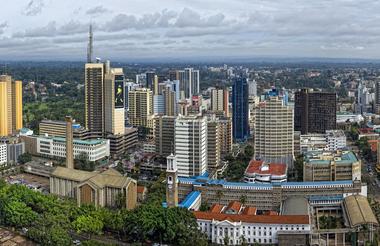

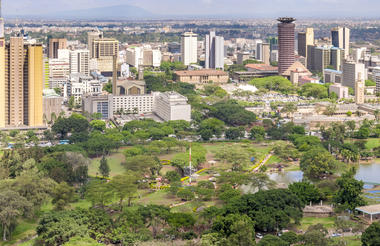
Met on arrival at Jomo Kenyatta International Airport
Transfer to the hotel
Dinner at the hotel
Today's Schedule
- 07:00am: Breakfast at the hotel
- 08:15am: Depart for a private tour with your English-speaking safari driver guide to the Karen area of Nairobi (2 x Holden Safaris six-seater safari vehicles)
- 09:00am: Morning game drive in Nairobi National Park
- 11:00am: Visit Sheldrick Wildlife Trust Elephant orphanage
- 12:30pm: Visit Utamaduni Craft Centre
- 1:00pm: Lunch at Matbronze Café- Included
- 3:00pm: Visit the Giraffe Centre.
- 5:00pm: Return to the hotel in time to freshen up before a welcome dinner
- Welcome dinner at the hotel (included)
- Overnight at Tamarind Tree Hotel
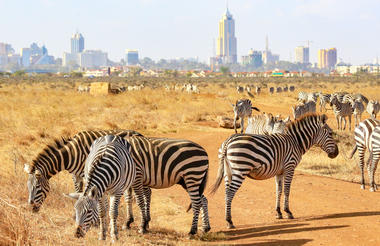
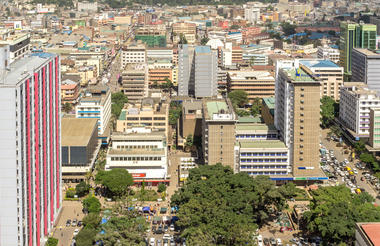
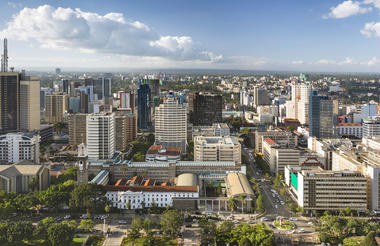
Breakfast
Day excursions
Lunch at Matbronze Cafe
Return transfer to the hotel
Welcome dinner at the hotel
Today's Schedule
- 07:00am: Breakfast at the hotel.
- 09:00am: Transferred to Wilson Airport to check in for scheduled flight to Maasai Mara Reserve (10:30am - 11:10am)
- Met on arrival at the airstrip by your driver / guide and transferred to the camp - enjoying a game drive enroute to the Sarova Mara Game Camp
- Arrive in time for lunch
- 3:30pm: Afternoon game drive in the reserve returning to the camp for dinner
- Overnight at Sarova Mara Game Camp
Location information
- In the iconic Maasai Mara Game Reserve lies the Sarova Mara Game Camp. It is built on a slight elevation between two streams and is laid out in sprawling grounds planted with indigenous and exotic plants. It has a great position between two rivers. There is an adjacent Maasai village and the lodge is perfectly positioned to make the most of the great Wildebeest and Zebra Migration.
- Guests can enjoy exciting game drives in search of Lion, Elephant, Giraffe and abundant plains game. These are conducted by experienced guides who will help track down the wildlife. Have memorable cultural encounters with the Maasai and go on exciting bush walks with them.
- Enjoy fishing, kayaking, and nature walks in the grounds of the camp or relax and unwind with a massage at the wellness spa or cool off with a dip in the pool.
- In the evening sip on a refreshing drink, delight in live entertainment and dine on tasty buffet meals up at the restaurant or dine out on the deck, under the star studded sky.
Masai Mara National Reserve
- ‘Mara’ means ‘spotted’ in the Maa language, which is spoken by the area’s ancestral residents, the Maasai people. It refers to how the Mara is dotted with acacia trees, indentations and craters when looked at from afar. Its wide open plains provide an oasis-like sanctuary for an abundance of wildlife like elephant, buffalo, zebra, giraffe, hyena, and the Mara’s celebrated big cats: lion, leopard and cheetah. And, from about July to November every year, its savannah provides nourishment for wildebeest herds of epic proportions.
- The reserve is particularly famous for its populations of big cats, with one of the highest concentrations of lion in the world, as well as large numbers of leopard and cheetah.
- Other predators include spotted hyena, black-backed jackal and bat-eared fox, while antelope species include topi, eland, reedbuck, impala and Thomson’s gazelle.
- Masai giraffe – the largest subspecies of giraffe found only in Kenya and Tanzania – is easily spotted.
- Each year, large herds of wildebeest and zebra make dramatic river crossings and the grasslands of the Mara are covered by a mass of moving wildebeest as far as the eye can see, offering easy opportunity for crocodile and predators who are never far away. (This is an act of nature and movement of the animals varies from year to year).
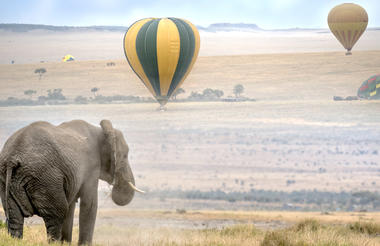
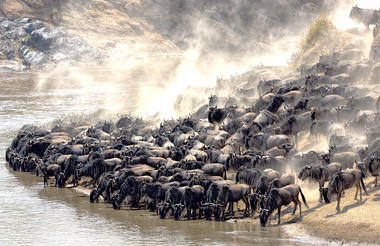
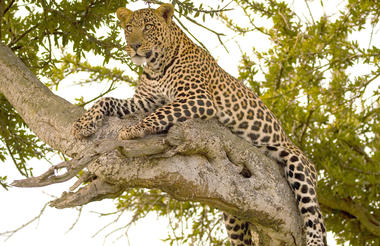
Breakfast
Transfer to Wilson Airport
Scheduled flight to Keekorok Airstrip
Transfer to Sarova Mara Game Camp
Lunch and dinner
Today's Schedule
- 07:00am: Breakfast at the camp
- 08:00am: Depart with your knowledgeable guide for a full day game drive in the reserve.
- Picnic lunches will be provided.
- 3:00pm: Visit to a Maasai village for a memorable cultural experience
- 6:00pm: Return to the camp before dinner
- 8:00pm: Dinner at the camp.
- Overnight at Sarova Mara Game Camp
Maasai Village Visit
- This fascinating tribe resides in the areas surrounding the Maasai Mara in Kenya and northern Tanzania.
- With their history dating as far back as the 15th century, the Maasai tribe is one of the oldest inhabitants of East Africa and still retain many of their traditions as they live relatively uninfluenced by modern day civilization.
- A highlight of any safari vacation in Kenya is a visit to the Maasai village to get a glimpse into their unique way of life as it promises to be an educational experience – in one way or another.
The traditional Maasai village is called a Manyatta and consists of several small huts made of mud and…. cow dung. These huts or boma as they are traditionally called are covered with thatched roofs and constructed in a circle so their livestock can stay in the middle protected from lions and other predators. As an added protection, the villagers also erect thick thorny fences around the huts.
Interestingly, it is the Maasai women who build these sturdy dwellings, only relying on the men to supply them with the necessary materials. They begin with a rugged framework of timber poles interwoven with smaller branches to form the structure, which they then cover with a mixture of mud, grass, cow dung, and ash.
The majority of Maasai tribes still practice their customary way of life as pastoralists and warriors with their cattle at the centre of their culture and social life. They are very proud to welcome visitors to their villages and often do so with song and dance, which you might even be able to join in! At certain times, one of the dancers will jump up and down gracefully in what is known as adumu or the most widely known “jumping dance”.
The many vivid colors of the Maasai’s garments is one of the first things you’ll notice as you enter the village. It often makes for a photogenic scene as these bright shukas or sheets contrast strongly with the browns and greens of the landscape stretched on the horizon.
Adding to this colorful display is the brightly beaded necklaces, bracelets and amulets worn mostly by the women who use such beaded jewelry to express their identity and social status. Some of these items will be displayed for sale and you can purchase some to help support the village as well as bring home an authentic, handcrafted souvenir from your travels.

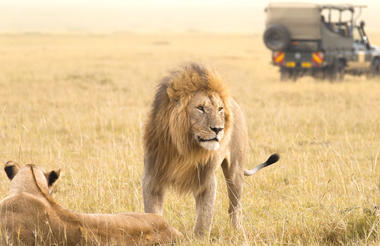
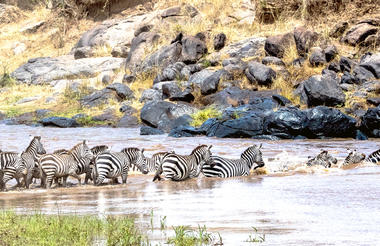
All meals
Full day game drive
Picnic lunches
Visit to Maasai village
Today's Schedule
- 07:00am: Breakfast is served at the lodge.
- 08:30am: Enjoy a morning game drive the reserve following the great migration (option of a full day game drive with picnic lunches)
- 1:00am: Return to the camp for lunch
- 4:00pm: Afternoon game drive in the park.
- 8:00pm: Dinner is served at the lodge.
- Overnight at Sarova Mara Game Camp



All meals
Morning and afternoon game viewing
Today's Schedule
- 07:00am: Breakfast at the lodge.
- 08:30am: Morning game drive in the park (option to enjoy a full day game drive with picnic lunches).
- 1:00pm: Return to your lodge for lunch
- 3:30pm: Afternoon game drive until sunset
- 8:00pm: Dinner served at the lodge
- Overnight at Sarova Mara Game Camp
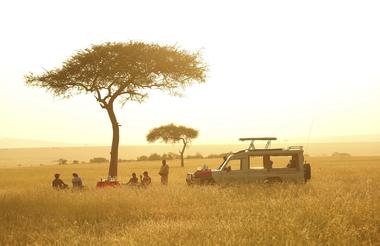


All meals
Morning and afternoon game viewing OR
Option for a full day game viewing (picnic lunches to be provided)
Today's Schedule
- 06:00am: Breakfast at the Camp
- 07:00am: Transferred to the airstrip with game drive enroute.
- 08:15am: Depart Maasai Mara to Migori airstrip (08:15h- 0900hrs).
- 09:00am: Arrive Migori Airstrip
- 09:00am: There is a 1-hour road transfer (shared bus) across Isebania/Sirari border Point.
- 11:00am: Fly from Tarime to Seronera airstrip (11:00am- 12:40pm)
- Met on arrival at the airstrip transferred to the camp for lunch.
- Time to relax after lunch before departing for an afternoon game drive
- 4:00pm: Set off on an afternoon game drive in the park returning to the camp at approximately 6:00pm
- 8:00pm: Dinner at the camp
- Overnight at Lahia Tented Camp
Location information
- The camp is strategically located at the top of a hill overlooking Central Serengeti with views towards Western Serengeti, within reach of mythical locations such as the famous kopjes masais, the museum at the Olduvai gorge, Seronera valley and the Grumeti river.
- Whether basking in the warm glow of the sunset or waking up to the mesmerizing sights and sounds of the savannah, every moment spent at this lodge promises to be a seamless blend of comfort, luxury, and natural splendor
Safari Activities
Game drives : You’ll have direct access to the Serengeti Mara ecosystem, the world’s most spectacular and diverse wildlife conservation area and the renowned migratory route traversed by more than a million wildebeest every year. You can see all of Africa’s iconic species here, including the Big Five, guaranteeing you an exceptional safari experience year-round.
With skilled, knowledgeable and enthusiastic guides, some in radio communication with trackers and other like-minded guides, you will be sure to see the most riveting events in your immediate environment. Your guides are proud of their ability to seek out the tracks and find the animals you most want to see. Your delight is their reward.
In custom-designed open roof or side 4x4 vehicles, you will enjoy unimpeded panoramic views of the Great Migration of the wildebeests, zebras, gazelles and elands, or the Big Five, seeking out royal lion prides and pachyderms elephant herds on the plains, buffalo by the rivers, leopard in the woodlands and rhino around kopjes, shrublands and dense forests.
Serengeti National Park
- The Serengeti National Park eco-system is the oldest on the planet. It boasts a diversity of flora and fauna that is unavailable anywhere else on the globe.
- Serengeti is home to one of the world's seven natural wonders - the more than 1 million wildebeest Migration that crosses the Mara River in Maasai Mara National Park in Kenya to the Park in search of the green pastures.
- In more than 1 million years, little has changed in the park. The wild animals, the plants and waterways are still largely intact as they were one million years ago. Amazingly, the oldest remains of man (2 million years ago) were discovered here by the famous East Africa archaeologist, Dr. Leakey.
- Thousands of the migrating animals will never make it back to Maasai Mara national park as African crocodiles and other carnivores have a feast waylaying the herbivores as they cross the Mara River.
- The Serengeti National Park is nestled at 3,020 feet to 6,070 feet above the sea level.
- Serengeti's Dry season is from June to October with two Wet seasons. The 'short rains' are from November to December, and the 'long rains' are from March to May. During the Wet season, it rarely rains all day, but afternoon thundershowers can be expected.
- The Expanse of Serengeti is home to the only active volcano in the area - the Ol Doinyo Lengai. It ejects mineral rich carbonate lava that is washed down to the plains of Serengeti to fertilize the land.
- Serengeti is largely savannah grassland with scattered pieces of Shrub land that is ideal for the herbivores to graze and good for the carnivores to hunt. Among the herbivores found here include, zebras, elephants, giraffes, wildebeests, antelopes, gazelles and buffaloes. Among the carnivores found include lions, cheetahs, leopards, hyenas, jackals, etc.
- The Serengeti is the ancestral land of the Maasai Community. The Maasai are one of the African communities that still practice their ancient cultural rituals such as circumcision, dances and sacrifices.



Breakfast
Transfer to Masai Mara airstrip
Scheduled flight to Migori aristrip
Met on arrival at the airstrip and transferred across border to Tarime
Scheduled flight from Tarime to Seronera airstrip
Met on arrival at the airstrip and transfer to the Lahia Tented Camp
Lunch at the camp
Afternoon game viewing
Dinner back at the camp.
Today's Schedule
- 07:30am: Breakfast at the camp
- 08:30am: Enjoy either morning and afternoon game drives (or enjoy a full day game viewing which will include picnic lunches.)
- 1:00pm: Return to the camp for lunch
- 4:00pm: Afternoon game drive in the reserve.
- 8:00pm: Dinner at the camp.
- Overnight at Lahia Tented Camp
Interesting Facts - Great Migration
- The Great Migration sees over 1.5 million wildebeest, 200,00 zebra and a host of other antelope travelling cross country.
- Between January and March, half a million wildebeest are born each year in the Serengeti. In February, the month with the highest calving rate, around 8,000 wildebeest are born each day.
- The Great Migration is the largest overland migration in the world. The animals travel a total of 800km or more during each cycle.
- While the migration may seem like a chaotic frenzy of movement, research has shown a herd of wildebeest possess what is known as ‘swarm intelligence’, where the wildebeest systematically explore and overcome an obstacle as one.
- The reason why zebra and wildebeest graze in harmony together is because they each eat different parts of the same type of grass.
- Because wildebeest have no natural leader, the migrating herd often splits up into smaller herds that circle the main, mega-herd, going in different directions. When considering these smaller, split herds the whole migration can cover over half of the whole Serengeti.
- The Serengeti National Park eco-system is the oldest on the planet. It boasts a diversity of plants and animals that is unavailable anywhere else on the globe.
- During the migration around 250,000 wildebeest and 30,000 zebra are killed off every year as a result of predation by carnivores, but also from thirst, hunger, and exhaustion.



All meals
Full day game viewing with picnic lunches
Or - Morning and afternoon game viewing with lunch at the lodge
Today's schedule
- 07:30am: Breakfast at the camp.
- 08:30am: Set off in the morning for either a morning game drive or a full day game drive which will include picnic lunches.
- 1:00pm: On a morning game drive you return to the camp for lunch.
- 4:00pm: Depart for your afternoon game drive
- 6:00pm: Return to the camp and have time to freshen up before dinner
- 8:00pm: Dinner at the camp.
- Overnight at Lahia Tented Camp



All meals
Full day game viewing with picnic lunches
Or - Morning and afternoon game viewing with lunch at the lodge
Today's Schedule
- 07:30am: Breakfast at the camp.
- 08:30am: Depart the camp and enjoy game drive enroute to Ngorongoro Conservation Area (approx. 4hrs drive)
- 1:00pm: Arrive in time for lunch at The Retreat at Ngorongoro
- 2:00pm: Spend the afternoon at leisure.
- 8:00pm: Dinner at the lodge
- Overnight at The Retreat at Ngorongoro
Location information
- The Ngorongoro Crater in Northern Tanzania, once a gigantic volcano, is the largest intact caldera in the world. Some maintain that before it erupted, it would have been higher than Mt Kilimanjaro, the highest peak in Africa.
- Nearly three million years old, the ancient caldera shelters one of the most beautiful wildlife havens on earth.
- Endangered black rhino is protected within its rim, giant tusked elephants wander the forests, black-maned lions stalk the grasslands, and flamingos crowd the soda lakes. An estimated 25 000 large mammals are resident in this bowl of plenty, including a population of approximately 6 000 resident wildebeest, 16 highly endangered black rhino and around 70 lions.
- Cheetah move in and out of the Crater, while leopard are most often encountered in the spectacular Lerai Forest.



Breakfast
Transfer to Ngorongoro Conservation Area
Lunch and dinner at The Retreat Ngorongoro
Today's Schedule
- 07:30am: Breakfast is served at lodge
- 08:30am: Depart the lodge and drive to the Ngorongoro Crater Rim
- Picnic lunches will be provided.
- 09:00am: Descend to the crater floor for full day game viewing
- 3:00pm: Return to the crater rim and drive back to the lodge.
- 8:00pm: Dinner at the lodge
- Overnight at The Retreat at Ngorongoro Lodge:
Ngorongoro Crater wildlife
- The crater floor supports significant populations of all the Big Five.
- Most commonly the African buffalo, large herds of which are often seen marching across the crater floor in search of grazing or water.
- Least likely to be seen is the leopard, which is resident on the crater floor, but only in small numbers due to a lack of suitable habitat, and tends to be retiring and secretive.
- Ngorongoro Crater serves as something of a retirement ground for old elephant bulls, many of which sport outsized tusks to dimensions now seldom seen in parts of Africa that have suffered from commercial poaching in recent decades.
- Lerai Forest and the nearby Gorigor Swamp are the favoured haunt of these mighty male tuskers, up to 70 of which are resident at any given time. Oddly, no elephant breeding herds are resident on the crater, though females and family herds do pass through from time to time.
- Ngorongoro Crater is one of the best places in East Africa to look for the black rhino, an endangered species with a very restricted presence in Tanzania.
- Between 1964 and 1992, the crater’s resident population of these cumbersome beasts decreased from an estimated 100 individuals to no more than 10 as a result of poaching.
- Since then, the local rhino population and the diversity of the gene pool has been boosted by the introduction of several individuals from South Africa, though the authorities are reluctant to publicise actual numbers. All the crater’s rhinos have been fitted with a tracking device in their horns, in order to monitor their movements and to discourage poachers.


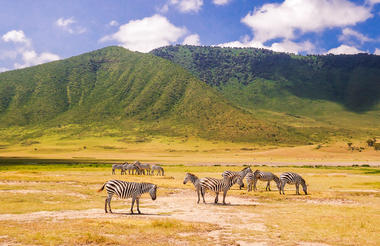
All meals
Full day game viewing at Ngorongoro crater
Picnic lunches provided
Today's Schedule
- 08:00am: Breakfast at the lodge
- 09:00am: Transfer to Kilimanjaro International Airport (approximate 4,5 hour drive)
- 2:20pm: Depart on Airkenya Aviation scheduled flight for Nairobi
- 3:35pm: Arrive at Wilson Airport, met by a Holden safaris driver guide in an 18-seater vehicle and transferred to the Carnivore Restaurant for early dinner (drinks for own account)
- 7:30pm: Transfer Jomo Kenyatta international airport where you will be assisted to check in for your international departure flight back home.
Breakfast
Transfer to Kilimanjaro International airport
Scheduled flight to Nairobi
Met on arrival at Wilson airport and transferred to Carnivore Restaurant for dinner
Transfer to Jomo Kenyatta International Airport for international departure.



